Results 6,301 to 6,310 of 12096
Thread: Anandtech News
-
09-12-16, 07:50 AM #6301
Anandtech: The Corsair Carbide 600Q Case Review: Upside Down But Right On
The concept of reversed and rotated motherboard tray cases is not new. Such designs primarily received attention with the introduction of the BTX form factor, when manufacturers were trying to make their products both ATX and BTX compatible. The prime example is probably the first generation Cooler Master Stacker, both for its design and what followed. The Stacker was successful enough to spawn a whole family of cases, however none of them retained the original's reversable tray. And, as things turned out, that's an accurate reflection of the larger market: ever since the BTX form factor has been abandoned, there are very few cases with rotated and reversed motherboard trays. Those few cases that still offer alterable trays are considered unordinary, special designs.
It is just such a special case that we are taking a look at in this review: the Corsair Carbide 600Q Inverse ATX case. Corsair introduced the Carbide 600Q as a high quality product that is focused on utility and low-noise operation. The primary attraction of this case however is its interior design. As the name suggests, the Carbide 600Q has an inversed motherboard tray that, according to the company, should enhance the thermal performance of the system. It goes without saying then that we'll be paying special attention to that claim for this review, and seeing how it compares against typical ATX designs.
More...
-
09-12-16, 07:50 AM #6302
Anandtech: Microsoft Releases The First Xbox Play Anywhere Title: Recore
At E3, Microsoft announced a new feature to bring together their Xbox ecosystem with the much larger, and more diverse, Windows 10 user base. The initiative was called Xbox Play Anywhere, and amazingly the name is quite appropriate. The idea is that you can purchase a supported game on either the Xbox One, or Windows 10 store, and you would get the version for the other platform at no cost. In addition, game saves would be synchronized between the two platforms, making for a seamless experience.
The move makes a lot of sense for the company, especially with the Xbox One sales falling short of their chief rival, Sony’s PlayStation 4. This is a way to more closely tie the two previously separate platforms. It’s taken a lot of work on the platform side to enable this, because only a couple of years ago Microsoft would have had no way to even distribute the game on Windows.
That has changed with Windows 10’s Universal Windows Platform, and the Windows Store, which has opened up this possibility. Changes brought in the Windows 10 Anniversary Update have enabled this game sharing, and tomorrow we will see the first Xbox Play Anywhere title launching with Recore, developed by Comcept and Armature Studio and published by Microsoft Studios. This is certainly not going to be the last title either, with all of the games Microsoft announced at E3 also supporting this.
For those interested in trying out Recore, it’s a third person action-adventure game, and I’ve had a chance to play it over the last couple of days on both the Xbox One and the PC. I’m not going to do any plot reviews or anything, but the core game mechanics are one of the few to pull me in this year, and the inclusion of many puzzles as well as combat make for a pretty fun game. Xbox Play Anywhere has worked as advertised, with game saves quickly syncing between the two platforms, and it truly is a seamless experience quitting the game on one platform and picking it up on the other.
To get the best experience on the PC, a pretty beefy system is needed. The Recore team announced the specifications:
On my desktop system, with a Core i7-6700K and GTX 760, I was able to play with decent framerates on their medium setting, but for better graphics a bigger GPU would be recommended. On the Xbox One, my only issue was very long load times, but I did store the game on an external USB hard drive, which likely didn’t help. On my desktop, the same level load times went from minutes to seconds thanks to a Samsung 950 Pro.
I think this is a smart move by Microsoft for a couple of reasons, and in hindsight it’s a feature that they likely should have added a long time ago, but they didn’t have any sort of distribution system that would have worked for something like a PC game before the Windows 10 Store came along. On the sales side, it not only competes with Sony, but also with Steam, especially since the Steam Machine has yet to make a big impact in the console market. Microsoft has done a nice job bringing the console together with Windows 10, with the Xbox app, game streaming, and now Xbox Play Anywhere. They have a lot of work on the hardware side to catch up to Sony, especially with the new PS4 Pro. On the software side, they have a stronger hand.
More...
-
09-13-16, 01:37 AM #6303
Anandtech: NVIDIA Announces Tesla P40 & Tesla P4 - Neural Network Inference, Big & Sm
Over the last few months we have seen NVIDIA’s Pascal GPUs roll out among their consumer cards, and now the time has come for the Tesla line to get its own Pascal update. To that end, at today’s GTC Beijing 2016 keynote, NVIDIA CEO Jen-Hsun Huang has announced the next generation of NVIDIA’s neural network inferencing cards, the Tesla P40 and Tesla P4. These cards are the direct successor to the current Tesla M40 and M4 products, and with the addition of the Pascal architecture, NVIDIA is promising a major leap in inferencing performance.
We’ve covered NVIDIA’s presence in and plans for the deep learning market for some time now. Overall the deep learning market is a rapidly growing market, and one that has proven very successful for NVIDIA as the underlying neural networks map well to their GPU architectures. As a result, one of the focuses of the Pascal has been to further improve on neural network performance, primarily by improving the performance of lower precision operations. The company already saw strong sales in this market on the last-generation Maxwell architecture, and with Pascal they’re aiming to push things to a whole new level.
Within NVIDIA’s product stack for deep learning, they have opted to divide it into two categories of products: training cards and inferencing cards. Neural network training, which typically requires FP16 performance and a whole lot of horsepower, is handled by the likes of the Tesla P100 series, the only cards in NVIDIA’s lineup with a high performance FP16 mode. Meanwhile, because inferencing can be done with less precision on a smaller scale, NVIDIA has offered the M40/M4 cards, and now the P40/P4 cards for this task. With the training side having received its Pascal update earlier this year with the launch of the P100, NVIDIA is now catching up the inference side with today’s announcement of the Tesla P40 and P4.
By and large, the P40 and P4 are direct successors to their Maxwell counterparts. NVIDIA has retained the same form factor, the same power ratings, and of course the same target market. What’s new is the Pascal architecture, the underlying GPUs, and what they can do for inferencing performance.NVIDIA Tesla Inferencing Cards Tesla P40 Tesla P4 Tesla M40 Tesla M4 CUDA Cores 3840 2560 3072 1024 Base Clock 1303MHz 810MHz 948MHz 872MHz Boost Clock 1531MHz 1063MHz 1114MHz 1072MHz Memory Clock 7.2Gbps GDDR5 6Gbps GDDR5 6Gbps GDDR5 5.5Gbps GDDR5 Memory Bus Width 384-bit 256-bit 384-bit 128-bit VRAM 24GB 8GB 12GB/24GB 4GB Single Precision (FP32) 12 TFLOPS 5.5 TFLOPS 7 TFLOPS 2.2 TFLOPS INT8 47 TOPS 22 TOPS N/A N/A Transistor Count 12B 7.2B 8B 2.94B TDP 250W 50W-75W 250W 50W-75W Cooling Passive Passive
(Low Profile)Passive Passive
(Low Profile)Manufacturing Process TSMC 16nm TSMC 16nm TSMC 28nm TSMC 28nm GPU GP102 GP104 GM200 GM206
Inferencing itself is not a high precision operation. While the last-generation Tesla M-series cards operated at FP32 precision out of necessity – it’s what the hardware could support – the operations themselves can be done on much less. NVIDIA believes FP16 is sufficient for training, and meanwhile inferencing can go even lower, to 8-bit Integers (INT8). To that end, the Pascal GPUs being used in these products, GP102 and GP104, include additional support for high-speed INT8 operations, offering an 8-bit vector dot product with 32-bit accumulate. Put another way, in the place of a single FP32 FMA, a Pascal CUDA Core can perform 4 INT8 operations.
Combined with the overall improvements in GPU width and frequency on the Pascal architecture, and NVIDIA is touting the Tesla P40 & P4 to offer a major boost in inferencing performance, the kind of performance boost in a single generation that we rarely see in the first place, and likely won’t see again. On paper, on the best case scenario, the newer Tesla cards can offer upwards of several times the performance, with NVIDIA specifically promoting real-world performance gains of 4x in large GPU clusters.
Breaking things down by the cards themselves, we’ll start with the P40. The successor to last year’s M40, this card is a full performance 250W card designed for high performance servers holding one or more full-profile cards. The card is based on a fully enabled GP102 GPU, meaning all 3840 CUDA cores are active, and can boost up to 1.53GHz. Peak FP32 performance is 12 TFLOPs, while peak INT8 performance is 47 TOPS. This compares very favorably to the M40, which could offer 7 TFLOPS FP32, and lacked INT8 support entirely. The Pascal architecture alone offers a significant performance boost thanks to the wider GPU and higher clocks, but for customers that can make use of the INT8 functionality, the potential performance gains are immense.
Feeding the P40 is 24GB of GDDR5 clocked at 7.2Gbps. This is on a 384-bit memory bus, so we’re looking at a total memory bandwidth of 346GB/sec. Curiously, NVIDIA has opted not to use faster GDDR5X memory here despite the higher margins of the Tesla products, and this may have something to do with the tradeoffs the GDDR5X standard makes for its higher performance. Otherwise the card retains its predecessor’s 250W TDP, and a passive, full length/full height card design.
Meanwhile at the smaller end of the spectrum is the Tesla P4. Like the M4 before it, this card is designed for blade servers. As a result the card is both physically smaller and lower power in order to fit into those servers, utilizing a low-profile design and a TDP of either 50W or 75W depending on the configuration.
Under the hood, the P4 is based on the GP104 GPU. This GPU is fully enabled – so we’re looking at 2560 CUDA cores – however for power reasons the clockspeed is kept relatively low, boosting to just 1.06GHz. The memory clock is similarly reduced over full power GP104 products, with the 8GB of GDDR5 running at 6Gbps. Overall performance is rated at 5.5 TFLOPS for FP32, and 22 TOPS for INT8. Like the P40, the P4 stands to be significantly faster than its predecessor if developers can put the INT8 functionality to good use, as the M4 topped out at 2.2 TFLOPS FP32.
Within NVIDIA’s lineup, the reason for having two cards – besides the obvious factor of size – is scale, both in terms of physical configuration and in terms of performance scaling. Tesla P40 is being pitched as the highest performance available in a single card, while Tesla P4 offers better density. The difference on paper in terms of energy efficiency is pretty substantial; Tesla P40 requires about 50% more power per FLOP on paper. So installations that can scale massively across multiple GPUs are considered the prime market for the P4, while the P40 is aimed at applications that scale out to a handful of GPUs, and as a result need the most powerful GPUs available.
Moving on, along with the hardware announcement NVIDIA is also releasing a pair of new software products to go with the Tesla cards. These are the TensorRT library and the DeepStream SDK.
TensorRT, previously known as the GPU Inference Engine, is an inference engine library NVIDIA has developed, in large part, to help developers take advantage of the capabilities of Pascal. Its key feature here is that it’s designed to help developers move their already trained FP16/FP32 neutral nets over to the INT8 capabilities of Pascal. Given that INT8 can quadruple the performance of inference on an NVIDIA GPU, and you can see why NVIDIA is eager to provide developers with tools to help them utilize lower precision operations.
Meanwhile the DeepStream SDK is a video processing library that delivers on some of NVIDIA’s goals for video processing made at GTC 2016 earlier this year. A counterpart of sorts to TensorRT, it’s a high performance video analysis SDK that links Pascal’s video decode blocks with the TensorRT inference engine to allow full video decode and analysis to take place on a Tesla card. NVIDIA sees video analysis as being one of the big use cases for large scale farms of trained neural networks, so this is another case of them providing a software package to help kickstart that market.
Wrapping things up, as is common with Tesla product releases, today’s announcements will predate the hardware itself by a bit. NVIDIA tells us that the Tesla P40 will be available in October through the usual OEMs and channel partners. Meanwhile the Tesla P4 will be released a month later, in November. NVIDIA has not announced card pricing at this time.
Gallery: NVIDIA Tesla P40 & Tesla P4 Announcement Slide Deck





More...
-
09-13-16, 08:10 AM #6304
Anandtech: The Toshiba OCZ VX500 (256GB, 512GB, 1024GB) SSD Review
Toshiba's new OCZ VX500 SSD is a replacement for the Vector 180 that adopts a different controller to enable much better power management, support for 15nm MLC NAND and a lower price, but also lower performance in some cases. The VX500 is a mid-range SATA SSD intended to better serve the mainstream market segment while waiting for Toshiba's 3D NAND to arrive.
More...
-
09-13-16, 09:56 AM #6305
Anandtech: Discrete Desktop GPU Market Trends Q2 2016: AMD Grabs Market Share, But NV
We're back once again with our periodic series looking at computer hardware market trends, this time taking a look at GPU sales for Q2 2016. Broadly speaking, unit sales of discrete desktop graphics cards are traditionally not strong in the second quarter. This year was not an exception, and shipments of video cards nearly hit a multi-year low after dropping by around 20.8% from the previous quarter, according to Jon Peddie Research (JPR). During the quarter, AMD managed to slightly improve its shipments and gained market share, whereas NVIDIA’s sales of desktop discrete GPUs were down in terms of units. Nonetheless, the latter still commands the lion’s share of the market.
The Market Is Changing
Before we look at the numbers for Q2 2016, we should take a short look back to understand what is happening on the market of discrete GPUs and why it is transforming nowadays the way it is transforming.
While integrated GPUs have been around for the better part of a decade and a half now, it's really only in the last 5 years or so that they've been a first class citizen in the desktop market. Integrated GPUs have always eaten away at discrete sales - the peak for discrete card sales was back in 1999 at 114M units - but it's when they became useful for more than basic texts and spreadsheets that they more heavily impinged on the discrete market.
The catalyst for this change was when Intel integrated their GPU into their CPU itself in 2010 with Sandy Bridge. By moving the GPU to a leading-edge process and by allocating ever-greater transistor budgets and die space to its various blocks, performance of their iGPUs started to increase rapidly. Today, higher-end Intel’s iGPUs can successfully compete against entry-level discrete GPUs, severely curtailing the sub-$100 discrete GPU market and significantly shrinking total available market (TAM) of standalone cards. For example, in 2006, the industry sold approximately 84.65 million desktop discrete add-in graphics boards. However, unit sales of such components in 2015 dropped to about 44 million units, according to JPR.
Even though iGPUs may eventually replace affordable video cards, high-end discrete GPUs continue to gain horsepower every year and their level of performance is miles ahead of iGPUs. Moreover, the population of gamers who need advanced graphics add-in-boards (AIBs) to play their favorite titles has grown. As a result, while the TAM of standalone GPUs is shrinking, the demand for high-performance graphics cards is growing; the market is (broadly) shifting towards a more enthusiast-centric market. In the recent years shipments of high-end desktop GPUs totaled around 2.8 – 3 million units per year (2.9 million in 2014), but in 2015 sales of such products increased to 5.9 million units.
It is impossible to tell when unit sales of desktop discrete video cards hit the bottom and demand for high-end graphics cards peaks. There are still millions of low-end discrete desktop graphics cards sold every year and it does not look like they are going to disappear overnight. But given the current trends, it is clear that developers of discrete GPUs tend to invest more in development of mainstream and high-end processors and less in creation of entry-level chips.
Q2 2015: Good for PCs, Not Bad for Discrete GPUs
In the second quarter of 2016, the industry sold between 62.4 million and 64.3 million PCs, according to IDC and Gartner respectively. Meanwhile, discrete GPUs were used in 27.78% of PCs, claims JPR. Since the latter does not disclose its overall PC numbers, we can only estimate that shipments of discrete GPUs (for desktops and notebooks) were between 17.33 and 17.86 million units, based on the numbers from IDC and Gartner. Jon Peddie Research estimates that shipments of standalone GPUs in Q2 2016 were down 14.19% from the previous quarter, and decreased 1.03% from Q2 2015.
While unit sales of PCs in general were down year-over-year – between 4.5% and 5.2% depending on whose numbers you use – their shipments did not decrease from Q1 2016. According to Gartner, they remained on the same level and according to IDC they actually increased by nearly two million units. Moreover, JPR claims that unit sales of desktops were up 2.5% quarter-over-quarter (QoQ). But despite relatively strong demand for desktops, shipments of discrete video cards for such PCs declined by 20.8% quarter over quarter, but increased by 0.8% year-over-year, based on data from JPR.
Jon Peddie Research does not officially disclose how many graphics adapters for desktop PCs were sold in Q2 2016, but based on the company’s previously released numbers, we can estimate that various makers of AIBs sold approximately 9.44 million video cards, which is slightly up from 9.38 million units in Q2 2015 (see notes below).Desktop Discrete Graphics Cards Market in Q2 2016
Data by Jon Peddie Research
Numbers are in percentage points or in millions. Numbers are approximate.Q2 2016 Q1 2016 Q2 2015 Share Shipments Share Shipments Share Shipments AMD 29.9% 2.82 22.8% 2.717 18% 1.68 NVIDIA 70% 6.6 77.2% 9.2 81.9% 7.68 Other 0.1% 0.0094 0% 0 0.1% 0.0093 Total 100% 9.44 100% 11.92 100% 9.38
As pointed out above, the second quarter is seasonally not good for unit sales of desktop discrete GPUs. However, it looks like 2016 seems to be shaping up well for AIBs in general: unit sales of desktop video cards in Q1 were 11.92 million (up from 11.3 million in the same period a year ago) and in Q2 they totaled 9.44 million units. If our estimates of JPR’s data are correct, then shipments of desktop discrete GPUs in 1H 2016 increased by approximately 3% YoY to 21.36 million units (which means that AIB suppliers sold at least 650K more graphics cards than in 1H 2015).
Market Shares: AMD Is Regaining Ground Amid Flat Shipments
Historically, AMD commanded 35 – 40% of the discrete desktop GPU market. Things started to turn south for AMD in Q3 2014 both in terms of shipments and share. By Q2 2015, the company’s share dropped to 18% and unit sales of standalone GPUs for desktops declined to 1.69 million units. By contrast, NVIDIA was thriving: its share increased to as high as 82% in Q2 2015, but since the market was shrinking its shipments did not grow very significantly.
To regain market presence, AMD had to clear-out old inventory and address niche markets with products like the Radeon R9 Nano. The measures along with low base effect helped the company to demonstrate steady growth of desktop GPU shipments over the past 12 months. Seasonality did not affect AMD in Q2 2016 and the company managed to increase its shipments by ~100 thousand of units (if our estimates are correct).
Unlike its rival, NVIDIA was affected by seasonality in the second quarter, and likely anticipation of its Q2/Q3 product launches. Moreover, the company decided to clear out some of the inventory of older model cards amid the launch of Pascal-based GeForce 1070 and 1080 graphics cards, according to JPR. This greatly affected actual shipments and market share of NVIDIA: unit sales decreased by 14% YoY and by 28% QoQ, whereas market share declined to 70%.
AMD: Mining and Polaris Help to Drive Growth
AMD sold approximately 5.5 million of desktop discrete GPUs in the first half of 2016, up from about 4.2 million in the same period a year ago. The company’s management says that the recent introduction of its Polaris-based Radeon RX 470 and 480 GPUs helped it to increase unit sales of graphics cards in the channel in Q2. Besides, revived interest for crypto currency mining using GPUs also helped AMD to sell more Radeon cards in the first half of the year. Since AMD doesn't break out its GPU revenues from the larger financial results of its Computer and Graphics Group, we cannot say how significantly the company improved its financial results by selling more chips/cards in the second quarter.
“Our strong second quarter graphics performance was capped by the launch of our new Polaris-based RX 480 GPUs at the end of June, which helped contribute to our highest desktop channel GPU shipments since the fourth quarter of 2014,” said Lisa Su, chief executive officer of AMD, during the conference call with investors and financial analysts. “We also delivered our third straight quarter of sequential professional graphics revenue growth and believe we gained share driven by increased adoption of FirePro graphics by OEMs as well as several cloud data center GPU compute wins.”
Strong mainstream offerings like the aforementioned Radeon RX 470/480 graphics cards could help AMD to further increase shipments of desktop AIBs in the coming months. The company admits that to further boost unit sales, it needs more chips from GlobalFoundries, but it assures that their yields are improving.
“We are very pleased with the launch of the Radeon RX 480,” said Lisa Su. “We had good supply at major retailers on launch day. Since then, the demand has continued to be strong and so some of the retailers are out of supply. We do see that the 14 nm LPP yields are good and we are ramping up production steeply.”
A good news for AMD is that unit sales of discrete desktop video cards in the second half of the year are traditionally higher than in the first half. Therefore, if everything goes well and the company manages to capitalize on its Polaris architecture, it has chances to sell more standalone desktop GPUs in 2016 than it did in 2015.
NVIDIA: Thanks to Pascal, Gaming GPU Revenue Nearly Sets All-Time Record
From a volume perspective, sales of NVIDIA’s standalone GPUs for desktops decreased in the first half of 2016 in general (to ~15.81 million units, down 4% YoY) and in the second quarter in particular (to ~6.61 million units, down 14% YoY and 22.2% QoQ). A big drop of unit shipments caused a natural decline of the company’s market share.
However, lower unit sales do not always translate into poor financial results. If we take a look at NVIDIA’s financial results for Q2 FY2017 (started on May 2, ended on July 31, so it is not exactly calendar Q2), we will notice a 18% YoY and a 13% QoQ increase in the company’s gaming GPU revenue. While it is not exactly right to compare calendar Q2 with NVIDIA’s Q2 FY2017, even such comparison gives us an idea what happened in April – July period.
Since demand for discrete graphics adapters by mainstream users in Q2 is not strong, the company decided to clear out its older inventory and not pursue volume shipments, but focus on ramping up new Pascal-based products. This clearly cost the company a lot from the market share point of view, but to a certain degree, it stimulated demand for higher-end Pascal video cards by gamers. Since the new GeForce GTX cards command a significant price premium, NVIDIA naturally improved its earnings during the quarter.
Demand for NVIDIA’s latest video cards was very high and many observers reported shortages of the new AIBs. The company claims that yields of its GPUs produced using TSMC’s second-gen 16 nm FinFET process technology (CLN16FF+) are going to improve, which will clearly amplify its supply.
“16 nm FinFET is no trivial task, not to mention the speed of the memories that we used,” said Jen-Hsun Huang, chief executive officer of NVIDIA, during a conference call with investors and financial analysts. “The number of technological challenges that we overcame in the ramp of Pascal is quite extraordinary. […] Now, going forward, we are going to continue to refine yields, and that is absolutely the case. However, we came into 16 nm with a great deal of preparedness, and so it is too early to guess what is going to happen to yields and margins long term, but we'll guide one quarter at a time.”
Even though Q2 2016 was not very good for NVIDIA from unit sales point of view, the second half of the year is going to be better in general. The company will try to capitalize on its comprehensive lineup of mainstream and high-end GPU offerings based on its Pascal architecture. In fact, due to the launch of two GeForce GTX 1060 SKUs in Q3, unit sales of Pascal-based products will inevitably be higher this quarter compared to Q2. However, it remains to be seen whether the company manages to sustain its annual GPU unit sales at ~35 million this year.
Wrap Up
Despite relatively weak shipments of PCs in 2016, unit sales of discrete desktop graphics cards in the first half of this year are actually higher that unit sales of such products in the same period a year ago. Declines of AMD Radeon sales seem to be over, but the company still has to do a lot to re-capture lost share from NVIDIA. In Q2 AMD managed to sell approximately 2.8 million of desktop AIBs and commanded 29.9% of the market. However, with 6.6 million discrete desktop GPUs sold in the second quarter and 70% share, NVIDIA remains the leader in this segment of the market despite significant drop of its unit shipments.
Integrated graphics is slowly shrinking TAM of standalone GPUs. For now, sales of entry-level graphics processors are still relatively decent, but going forward unit sales of such products will continue to drop. By contrast, sales of high-end desktop AIBs are on the rise, and last year has seen both AMD and NVIDIA benefit from that. Enthusiasts are still a small part of the big picture, but as GPU prices and sales patterns continue to drift towards the high end, they are an increasingly critical part of the picture.
Important Notices- Jon Peddie Research does not officially disclose actual unit sales of AMD, NVIDIA and Intel in its press releases. All unit sales published here are derived from market shares of appropriate vendors.
- Since in many cases JPR does not disclose quarterly TAM numbers, those numbers are derived from historical numbers published by the company.
- Some historical numbers were re-stated by IHVs and JPR reflected such updates in subsequent reports and releases. As such, some numbers in our graphs may differ from publicly available press releases.
- JPR did not release any data concerning sales of desktop discrete graphics cards in Q1 – Q3 2010, but only disclosed shipments for Q4 and total shipments for the year, which is why the numbers in the charts for Q1, Q2 and Q3 are the same.
- Given the fact that unit sales and TAM figures are approximate, we recommend to buy full reports from Jon Peddie Research if you need the data for decision-making.
More...
-
09-13-16, 11:07 AM #6306
Anandtech: The iOS 10 Review: Refining the iOS Experience Both Over & Under the Hood
The momentum of the mobile space has changed in the past year. As the market for high end smartphones approaches saturation, the focus on the software side has moved from massive feature expansions to refinement and optimization. We saw great examples of this with both iOS and Android over 2014 and 2015. Whereas iOS 8 and Android Lollipop were heavy with feature releases, iOS 9 and Android Marshmallow were much lighter. Following up to a large feature release provided both teams a good time to reflect upon their development directions and a focus on improving the user experience.
2016 marks a very special year for iOS. After launching as iPhone OS back in 2007, iOS has gone through many iterations and a name change, and has now arrived at version 10. Although version numbers are somewhat arbitrary – Apple has been on macOS 10 for sixteen years now – the tenth major release for an operating system is still an important and exciting milestone. It means that a platform has withstood the test of time, and ideally has had ample opportunity to mature. At the same time however, because it’s a milestone, it’s a reflection on both the past and the future; what has come before, and what is yet to come. For Apple and its eager customer base, iOS 10 embodies this well: the company is in a position where they need to deliver a substantial update, if for no other reason than to satisfy expectations.
Today we'll be taking a look at just what Apple has done to meet those expectations, both above the hood and beneath it. The tenth iteration of iOS may not be a radical overhaul, but it is a release that has touched every part of the system. There are big design changes, and big app changes, plus new features and APIs so developers can make even better applications. On top of all that there are performance improvements to bring back the smoothness to areas where it was lost during Apple's rapid redesign and feature boosts in iOS 7 and 8.
More...
-
09-14-16, 03:34 AM #6307
Anandtech: Logitech Multi-Device K780 Keyboard and M720 Triathlon Mouse Review
Logitech introduced an innovative multi-device Bluetooth keyboard, the Multi-Device K480, back in 2014. The K480 could be configured for use with up to three different devices, and definitely stood out in the crowded I/O peripherals market. Our wish-list for a follow-up product included an integrated trackball or touchpad and ability to use such multi-device peripherals with a wider range of PCs (not just the ones with Bluetooth capabilities).
This year, Logitech has expanded their multi-device lineup with two new products:
Both products retain the important characteristics of the K480. They can be paired with up to three different host devices and easily switch between them. The hosts can be Android, iOS, Mac or Windows devices, and the keys in the keyboard get automatically re-mapped depending on the host OS. Similar to the K480, the K780 has Mac / iOS inputs printed in grey on the keyboard. Both the mouse and the keyboard have explicit on/off buttons in order to conserve battery life.
The two products together address many of the shortcomings of the K480 from 2014. The important features / changes are summarized in the list below.
- Consumers can use either Bluetooth or a 2.4GHz RF Unifying Receiver (included with both products) to communicate with the host device
- A dedicated number pad is present in the K780 (96 keys), but, not in the K480 (79 keys)
- The device-change mechanism for the keyboard has been altered. Instead of a rotary dial (used in the K480), the K780 uses multiplexed function keys for the same purpose
- The wider K780 keyboard allows for compatibility with more devices (including the iPad Pro in portrait mode) when it comes to placement in the cradle at the top of the unit. The K780 is also heavier and more sturdy compared to the K480.
- The keys in the K780 are easier to type on and provide a better usage experience compared to the ones in the K480.
- The mouse contains buttons and gesture support that make it ideal for use with tablets as well as PCs.
The Logitech Options and Unifying Receiver Software
The addition of a USB receiver to both units indicates that Logitech is targeting the new devices towards PCs also. The K780 and M720 Triathlon are sold separately. Both of them come with their own Unifying Receivers. For use-cases that don't involve the USB receiver, both units have compartments to safely stow them away.
In our review process, we first connected the M720 Triathlon to a PC with its USB receiver. After installing the Logitech Unifying Software, we were also able to pair the K780 without using its USB receiver.
The Logitech Options software enables users to configure / alter the behavior of the configurable keys of all the attached compatible Logitech devices. The Unifying Receiver program can also be triggered from within this interface. The battery status of the devices can also be viewed through this program.
The K780 options include the ability to keep the keyboard always in the Windows layout and the option to use the F1-F12 keys as standard function keys (without using the Fn. key qualifier). The configurable keys include the Home button (F4), Right Click (F5), Back (F6) and the Search button (next to F12). They can be mapped to a variety of Windows functions / programs such as closing windows, Cortana, Calculator etc.
The M720 Triathlon is marketed as a 8-button device. Two of them (the one behind the scrollwheel that controls the rate at which it moves, and the one that switches the host device to which the mouse is paired) can't be remapped. Everything else can be configured using the Options software.
The left and right buttons can be swapped. The pointer speed can be finely adjusted and the scrollwheel direction can also be swapped. The mouse also has a gesture button below the three raised buttons on the left side. The scrollwheel can be swayed right or left for horizontal scrolling (on mobile devices, that acts similar to swiping right or left on the touchscreen). Along with the device change button, we also have the Forward and Back buttons on the left. The scrollwheel can itself act as a middle mouse button. All of these can be mapped to one of a variety of Windows actions (same as the list available for the K780).
Concluding Remarks
The Logitech K780 and M720 Triathlon are a great addition to the set of multi-device I/O peripherals from Logitech. They work as advertised, and there is really not much to complain about. As mentioned earlier, the keys of the K780 are a definite improvement over the K480. Evaluation of keyboards and mice targeted towards day-to-day / casual usage is an inherently subjective exercise. In the table below, we compare the specifications of the K780 / M720 Triathlon with some of the other keyboard / mice combos that we have evaluated with a similar approach before. Some subjective scores have also been provided.
While it is difficult to find scope for improvement in the M720 Triathlon, the K780 can be made a little more attractive with full-height arrow keys (that would go well with the PC use-case).Keyboard Bench Aspect Logitech K780 and M720 Logitech K830Perixx PERIBOARD-716Logitech TK820Perixx PERIBOARD-706 PLUSLogitech K480Adesso WKB-4000BBLogitech K400IOGEAR GKM561RSIIG JK-WR0412-S1SIIG JK-WR0312-S1Adesso WKB-3000UAdesso WKB-4400UBAdesso WKB-4000UBAdesso WKB-1200Logitech K780 and M720 Device Type Keyboard + Optical Mouse (2-button with scrollwheel / middle button and gesture support) Keyboard + 2-button Touchpad Dimensions (Keyboard) 14.96" x 6.22" x (0.87" to 0.32")
(Mouse) 2.91" x 4.53" x 1.77"14.40" x 4.90" x 0.65" Weight (Keyboard) 1.93 lbs / 875 g
(Mouse) 0.3125 lbs / 135 g1.09 lbs / 495 g Power Source (Keyboard) 2x AAA
(Mouse) 1x AAInternal rechargeable battery Communication 2.4 GHz RF and Bluetooth 4.0 2.4 GHz RF Power Saver Explicit On/Off Switches on both Keyboard and Mouse Explicit On/Off Switch Keys Count 96 (with multiplexed Internet and multimedia hot keys) 79 + 3 volume control keys Touchpad Dimensions (Diagonal) N/A 3.7" USB Receiver Storage Compartment Yes on both Keyboard and Mouse No Backlight No Yes Keyboard Layout 8/10 8/10 Ergonomics (Keyboard) 8/10
(Mouse)10/108/10 Build Quality (Keyboard) 9/10
(Mouse) 9/109/10 MSRP (USD) (Keyboard) $79.99
(Mouse) $69.99$99.99 Warranty 1 year 1 year
The K780 multi-device keyboard is priced at $79.99 and the M720 Triathlon mouse is priced at $69.99. The K480 was a Bluetooth keyboard that fulfilled a niche market need. With the new multi-device models, Logitech is hoping to service that market with products that are better suited for the allied use-cases, while retaining similar price points.
More...
-
09-14-16, 10:48 AM #6308
Anandtech: Dell Unveils UltraSharp U3417W: Makes Its Curved Display More Curved
Dell has unveiled its new top-of-the-range 34” curved monitor for consumers. The new UltraSharp U3417W display has the same WHQD resolution as the U3415W introduced a year ago, but increased curvature and a new chassis design. The monitor is aimed particularly at users who do heavy multitasking but do not want to install two monitors on their desks.
Nowadays, the majority of display makers position their curved monitors primarily for gamers and multimedia enthusiasts, thus, trying to incorporate very high refresh rates along with dynamic refresh rate technologies like AMD’s FreeSync or NVIDIA’s G-Sync. Meanwhile, Dell, quotes IDC’s findings that professionals from many industries (including those, who do finance, accounting and creative work) can benefit both from ultra-wide 21:9 aspect ratio as well as curvature. As a result, Dell offers curved monitors specifically tailored for professionals. Back in April, 2015, the company released its first U3415W curved display and this month it unveiled a newer model, the U3417W.
The Dell UltraSharp U3417W has higher curvature than its predecessor: 1900R vs 3800R. All the other specifications are generally similar: an IPS panel with 3440×1440 resolution, 1000:1 contrast ratio, 300 nits brightness, 178°/178° viewing angles, 5 ms response time in fast mode and a 60 Hz refresh rate. Dell believes that slightly higher curvature will further improve professional productivity.
When it comes to connectivity, the UltraSharp U3417W resembles other modern monitors from the company (e.g., the UP3017) designed for professionals as it supports two HDMI 2.0, one DP 1.2, and one mDP 1.2 inputs. For convenience, it has one DP 1.2 output with MST to for daisy-chaining to another display. Besides, the monitor also supports PBP and PiP features when connected to two PCs. Finally, it has a quad-port USB 3.0 hub with two receptacles supporting BC 1.2 charging as well as two USB Type-B upstream ports (to connect to two different computers).Dell's Curved Displays UltraSharp U3417W
2016 modelUltraSharp U3415W
2015 modelPanel 34" IPS Native Resolution 3440 × 1440 Maximum Refresh Rate 60 Hz Response Time 5 ms in fast mode
8 ms in normal modeBrightness 300 cd/m² Contrast 1000:1 Viewing Angles 178°/178° horizontal/vertical 172°/178° horizontal/vertical Curvature 1900R 3800R Pixel Pitch 0.233 mm 0.2325 mm Pixel Density 109 ppi unknown Anti-Glare Coating Yes Diagonally Viewable Size 86.72 cm
34.14 Inches86.5 cm
34.055 inchesPreset Display Area 799.80 mm × 334.80 mm
31.49" × 13.18"
267773.04 mm²
415.01 inches²798.20 mm × 334.80 mm
31.43" × 13.18"
267237.36 mm²
414.2474 inches²Inputs 1 × DP 1.2 (HDCP 1.4)
1 × mDP 1.2 (HDCP 1.4)
1 × DP 1.2 (out) with MST (HDCP 1.4)
2 × HDMI 2.0 (HDCP 1.4)1 × DP 1.2
1 × mDP 1.2
1 × DP 1.2 (out) with MST
1 × HDMI 2.0
1 × MHLUSB Hub 4-port USB 3.0 hub, two ports support fast charging
2 USB Type-B upstream portsAudio 9 W × 2
audio in/out portsLaunch Price $1199.99
The Dell UltraSharp U3417W curved display is available now for $1199.99 from the manufacturer. Meanwhile, the older model, the U3415W is now available for $899.99. It is unknown whether Dell will keep selling both models, but for now the previous-gen display is available for the price, which is $300 below its original MSRP.
Gallery: Dell Unveils UltraSharp U3417W: Makes Its Curved Displays More Curved





More...
-
-
09-15-16, 07:31 AM #6310
Anandtech: Assessing IBM's POWER8, Part 2: Server Applications on OpenPOWER
In this second part of our ongoing OpenPOWER coverage, we are taking a look at how the midrange IBM POWER8 compares to Intel's Xeon in applications that matter: Java servers, Big Data, and databases. We're also catching up on recent development in the OpenPOWER ecosystem, such as IBM's brand-new scale out servers for the HPC and Big Data market, utilizing new POWER8 and NVIDIA Tesla technology.
More...
Thread Information
Users Browsing this Thread
There are currently 49 users browsing this thread. (0 members and 49 guests)





 Quote
Quote


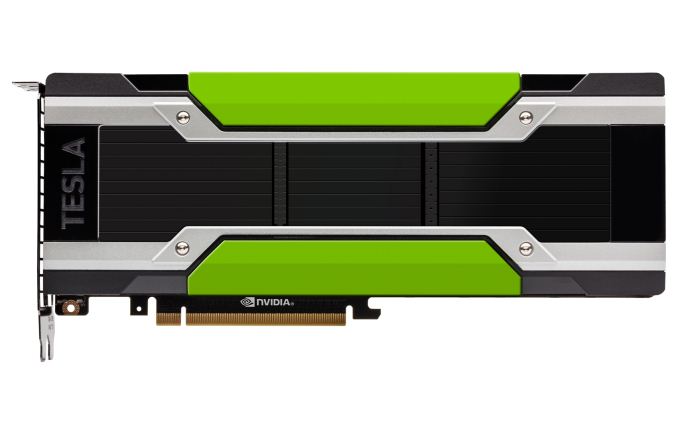
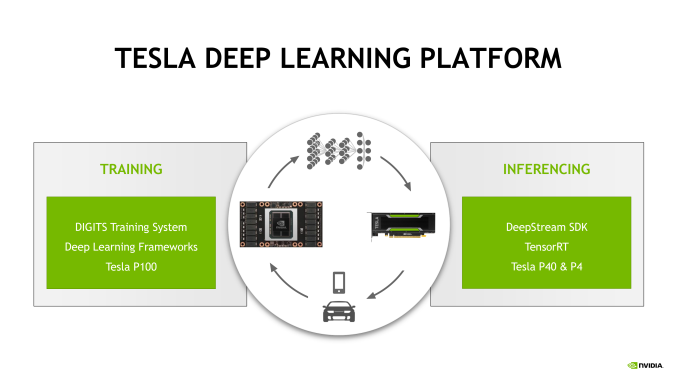
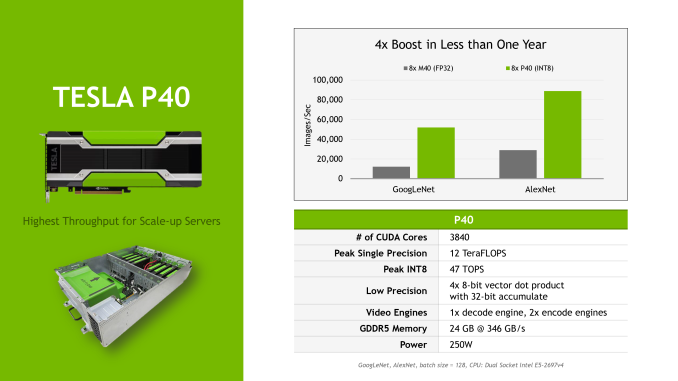
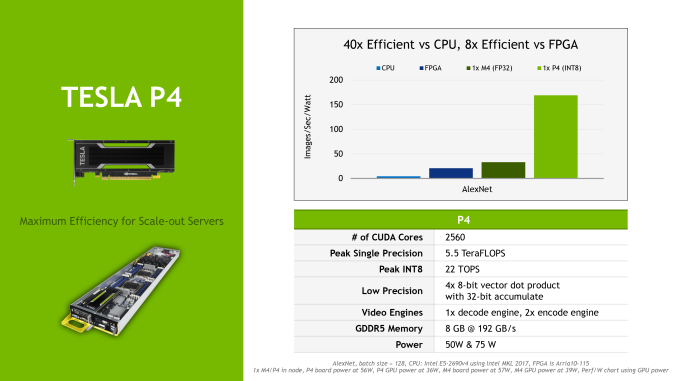
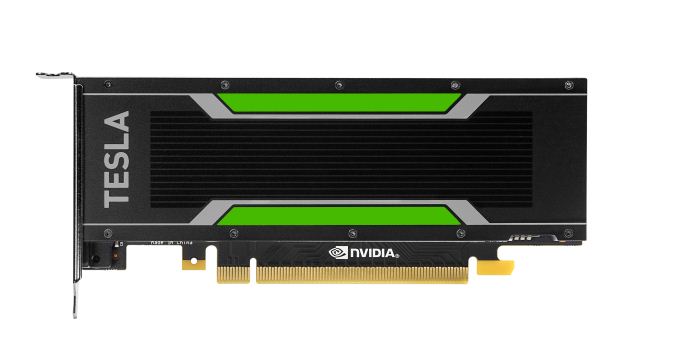
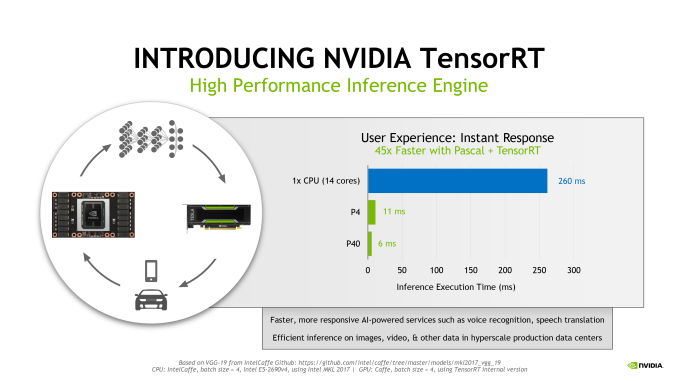

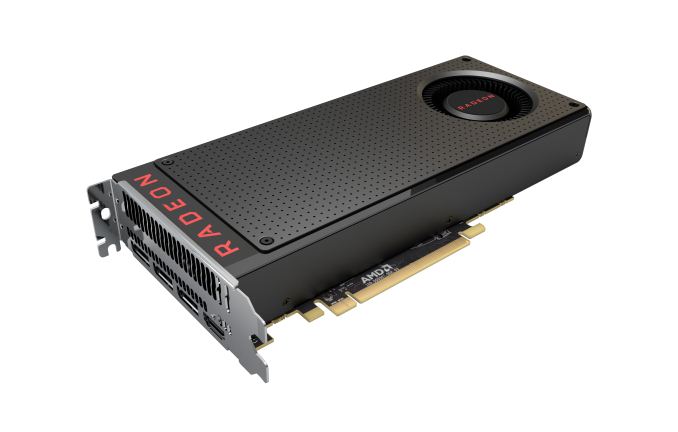

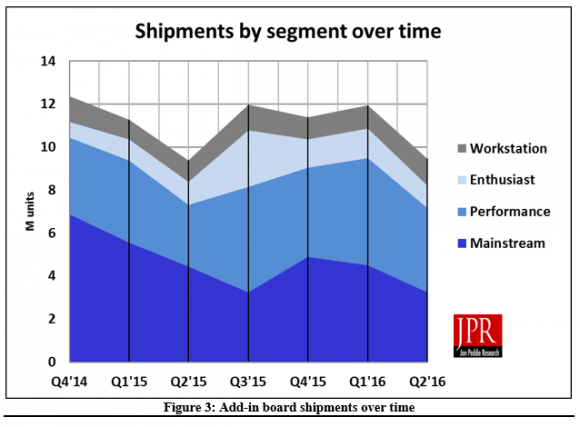
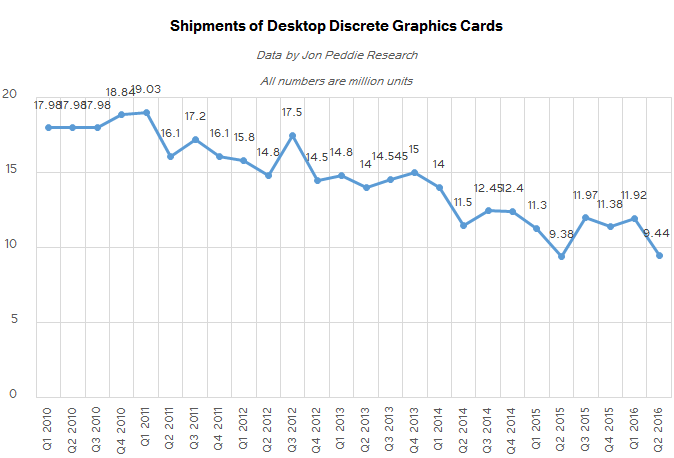

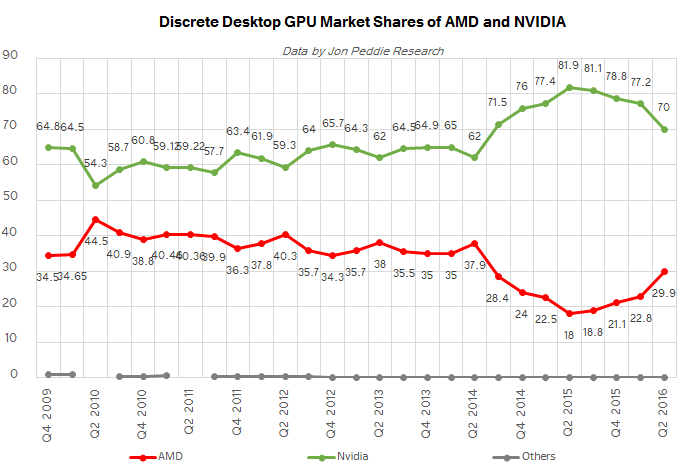
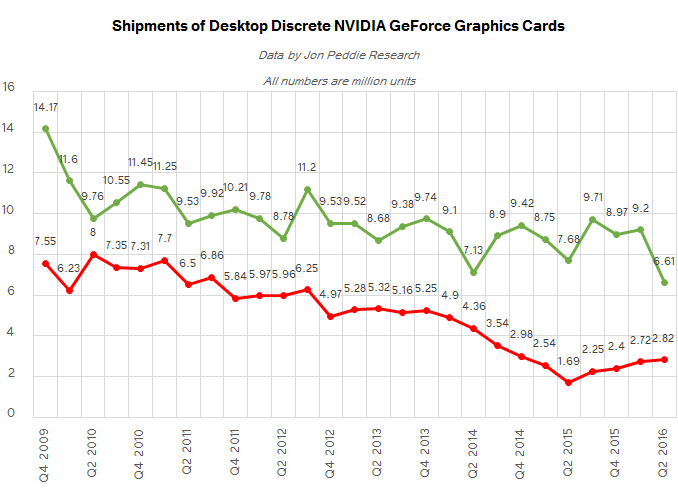
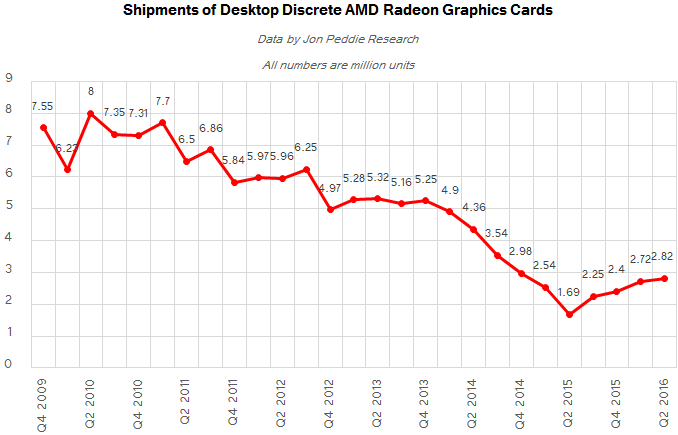
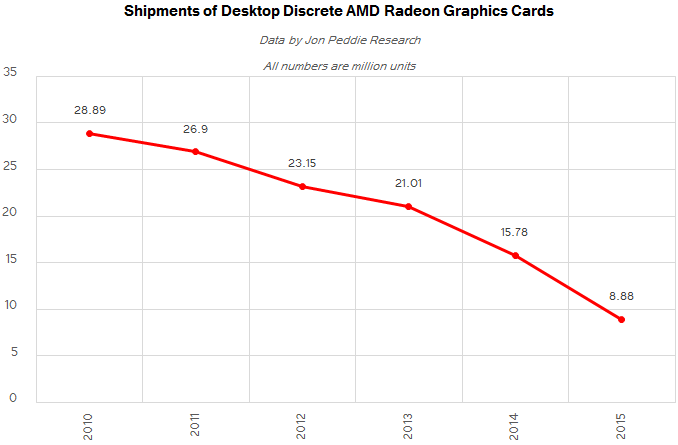
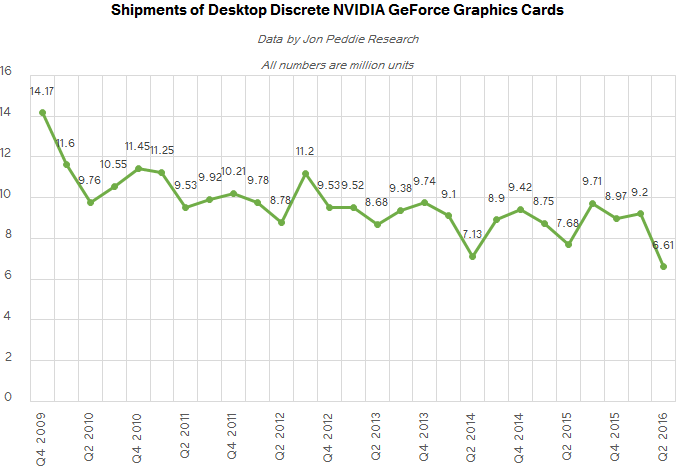

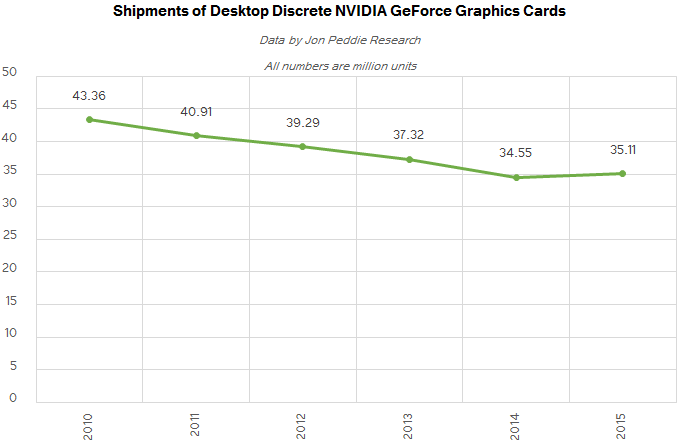
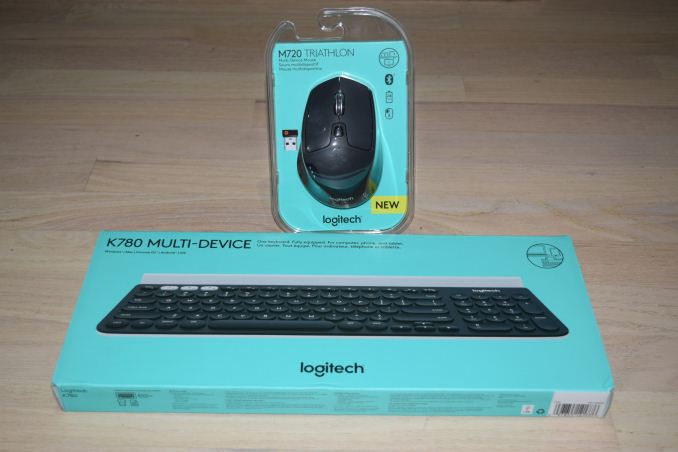











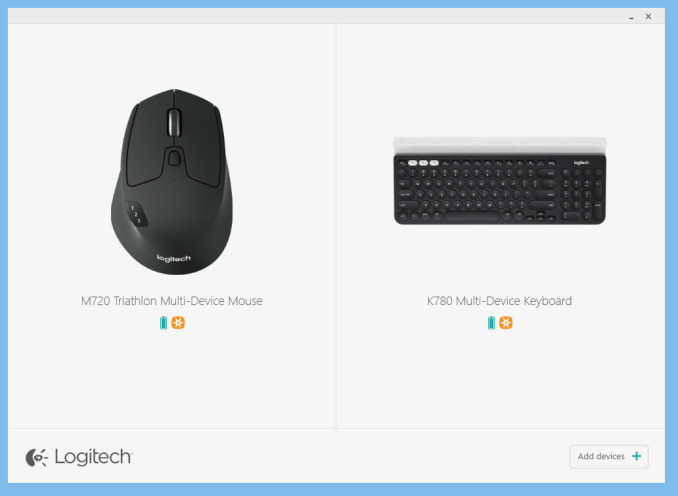












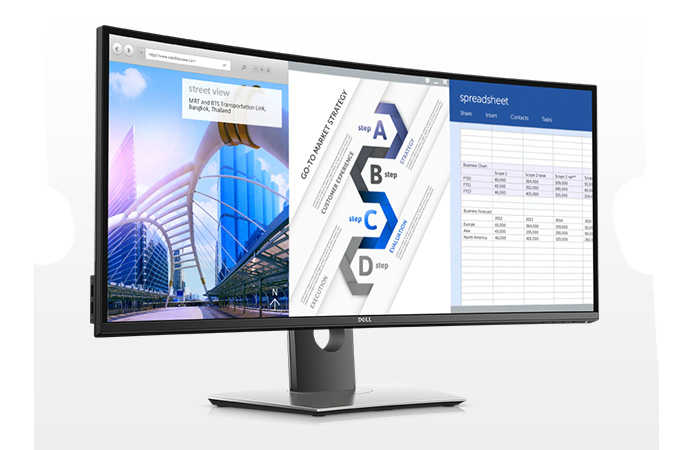
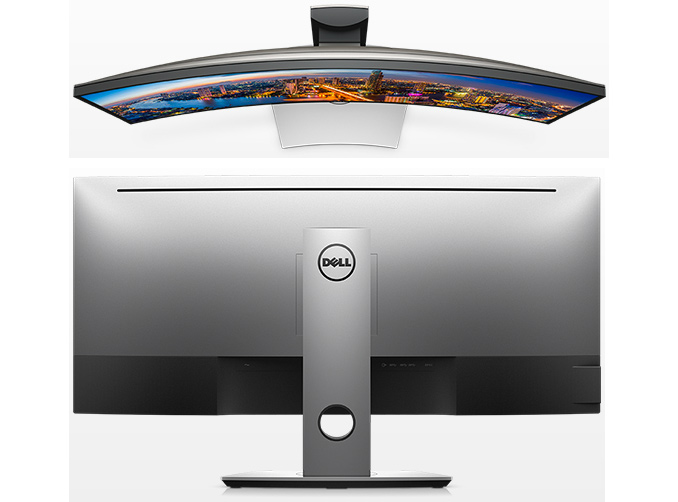
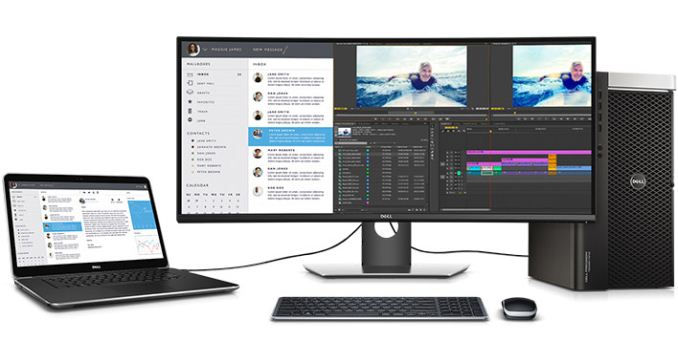
















Bookmarks